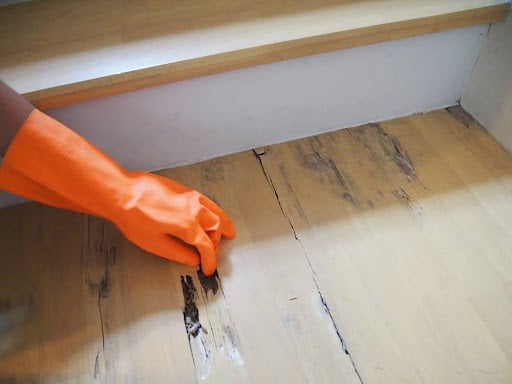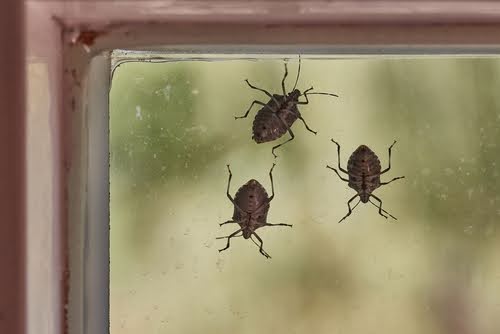Most pest infestations aren’t particularly subtle, but the damage they cause can be. You may hear mice running in your walls, but what are they doing to your insulation or electrical wiring? On the other hand, pests like termites can operate for months inside your wooden structures without you seeing or hearing a single one. Typically, the faster you notice pests, the faster you can take steps to wipe them out and avoid major structural damage or health problems.
To underscore the importance of identifying and treating pest problems quickly, let’s explore the ways they can go unnoticed. Often, pest damage is hard to see until it’s become significant. Here are four hard-to-see, but potentially expensive ways pests can wreak havoc without ever crossing your path.
4 Signs of Pest Damage
1. Drafts
Pests get into homes and buildings by finding or making small access points near windows, doors, or in the foundation. To work their way in, they may have to push their way through insulation or weatherstripping. Uneven hinges, ripped screens and uncaulked utility connections are common access points. Unfortunately, these pest entry points don’t disappear once they’ve been used. In fact, they can become pest expressways, leading to further infestation
The small gaps pests fashion to enter a home or building often create hidden drafts. These drafts, in turn, help other pests with strong sensory abilities, like rats and mice, find their way in. Beyond pest attraction, increased drafts drive up indoor humidity, force your HVAC to work harder, and make your home less comfortable. Fixing drafts is one of the most effective ways to prevent pests.
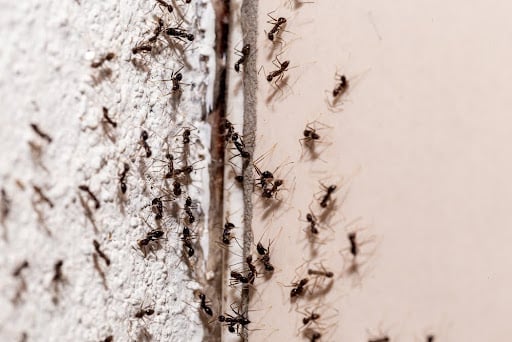
10 Ways to Identify and Fix Drafts:
- Look for damaged insulation in unfinished areas of your property
- Inspect door and window frames for damage
- Check and replace weatherstripping on doors and windows
- Install door sweeps
- Replace damaged or rotted wood
- Reglaze older windows
- Seal exterior cracks with caulk
- Seal around utility line connections
- Replace missing shingles or siding
- Seal around dryer vents and other exhaust ports
2. Wood Damage
Wood-boring pests like termites, carpenter ants, and powderpost beetles can all inflict significant damage on wooden structures. The problem is, this damage can be hard to identify until it’s significant.
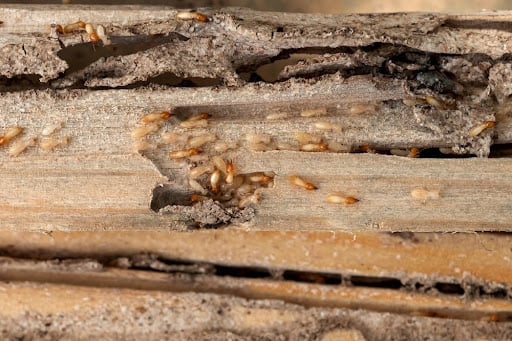
Termites and carpenter ants operate undercover and often feast deep inside beams, boards and walls where you wouldn’t see the damage unless you went looking for it. As they break the wood down, they carve networks of tunnels through it. They use these tunnels to move further into the wood until it is severely compromised. Wood-damaging pests don’t inflict damage overnight, but the damage they do inflict grows exponentially as they breed and flourish.
Each kind of wood-destroying pest leaves behind different evidence. Termites build mud-tunnels to move from the ground to wood nearby. Carpenter ants leave behind sawdust-like wood shavings as they excavate. Powderpost beetles eat pin-sized holes in wooden furniture. Look for wood that is soft or has water damage. Termites tend to favor damp, pre-softened wood. If you identify any of these signs of wood damage caused by pests, call in a pest control professional right away. They will be able to verify the presence of pests and more importantly, pinpoint their location for treatment.
3. Electrical Damage
Rodents love to sharpen their teeth on electrical cords. They frequently chew the soft plastic cover over cords and expose the wiring within. Sometimes, they’ll even damage the wire itself, releasing dangerous electrical current.
Rodent-related electrical damage is especially dangerous because it often goes unnoticed. Rats and mice are shy and nocturnal. They might chew on wires inside of walls, in attics, or in basements. Check for damage before you touch any wire, even if you don’t think it has a charge running through it.
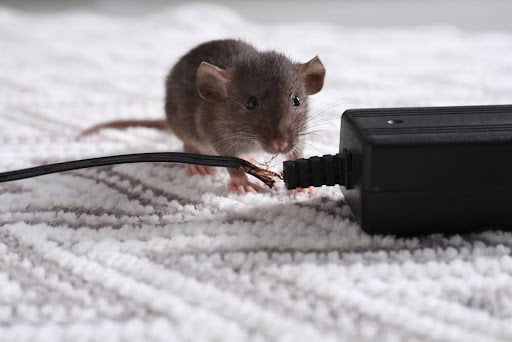
5 Risks of Damaged Electrical Wiring:
- Circuit overload and short out
- Electrical shock
- Appliance damage
- Overheating and sparks
- Electrical fires
Keep an eye on electrical wires in vulnerable areas of the home. If you spot damage, have an electrician repair or replace the wire immediately. Don’t use appliances with frayed cords. You can rodent-proof electrical wiring by using steel cable sleeves, rodent-resistant mesh covers, or rodent-resistant electrical tape. You can even buy rodent tape with built-in repellents.
4. Paper Damage
Not even your books and papers are safe from a potential pest attack. Roaches, silverfish, beetles, termites, and even booklice can devour paper as a food source. Paper pests can be particularly difficult to identify because stored paper products often sit undisturbed on shelves for long periods. Stacks of books packed away in your basement or closets can be especially susceptible.
Paper pests infest stored paper and keep eating until they don’t have anything left to munch on. Cockroaches are notorious for feasting on cardboard products such as saved paper bags and cardboard boxes. Paper also gives pests such as rodents material to build nests in.
The best way to prevent paper damage is by storing paper products in humidity and temperature-controlled places. If you’re storing paper for long periods in places like attics or basements, keep it in airtight, hard-plastic containers. A trained pest management expert can identify the types of pests damaging your books and papers and devise a treatment program to eliminate them.
Fast and Effective Treatment for Hidden Pests
The worst pest infestation is always the infestation you don’t know you have. Looking for these hidden signs of rodent and insect pest damage can be a good way to catch infestations early. Once you find a potential infestation, the hard part is over. Getting rid of pests and insects that feed on your home is as easy as contacting Plunkett’s Pest Control. We’ll find and wipe out any pest infestation!

